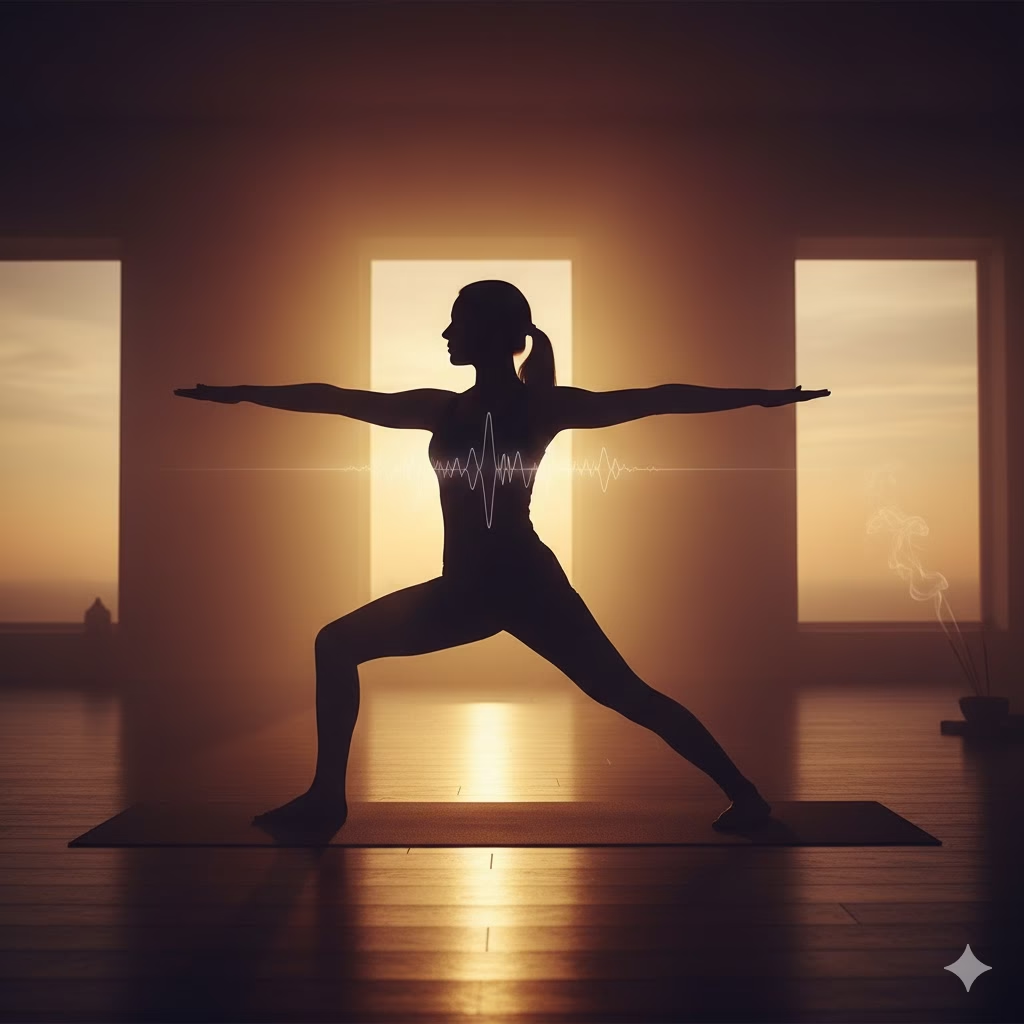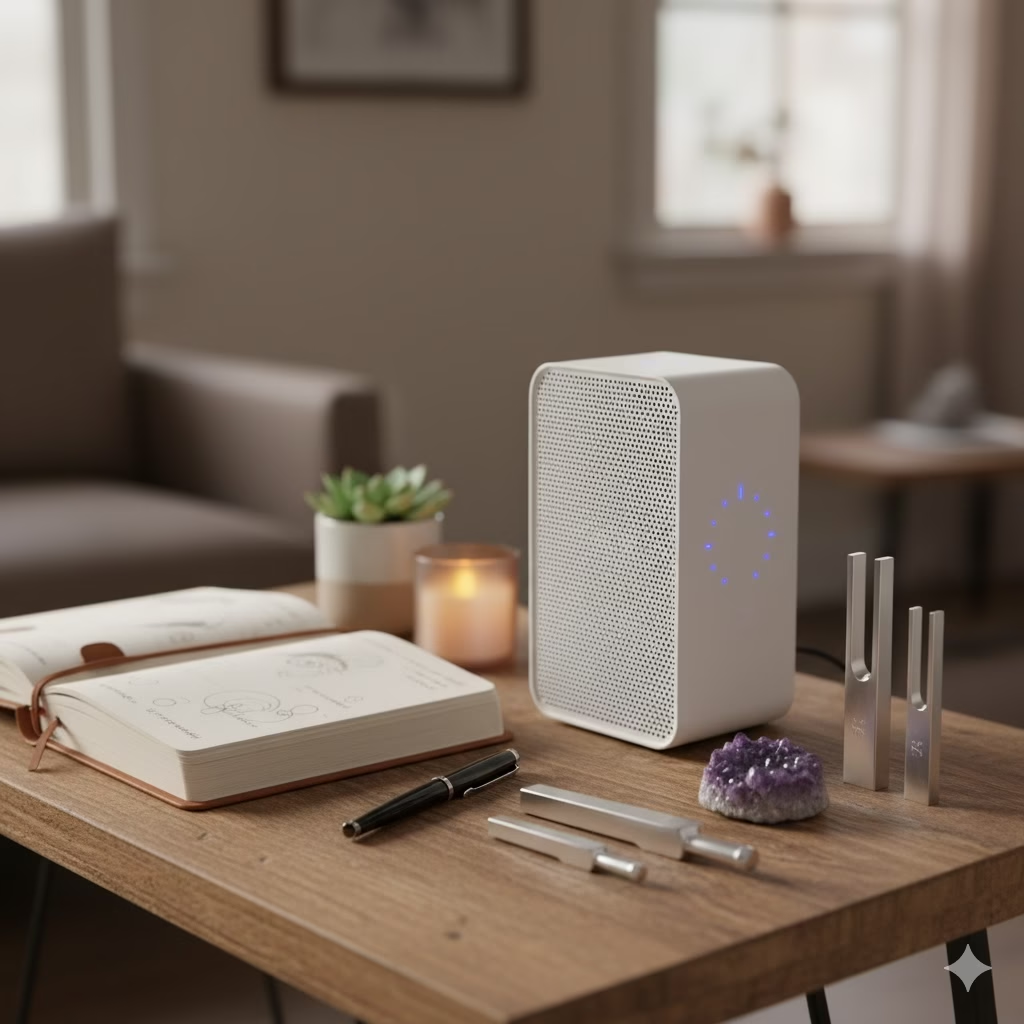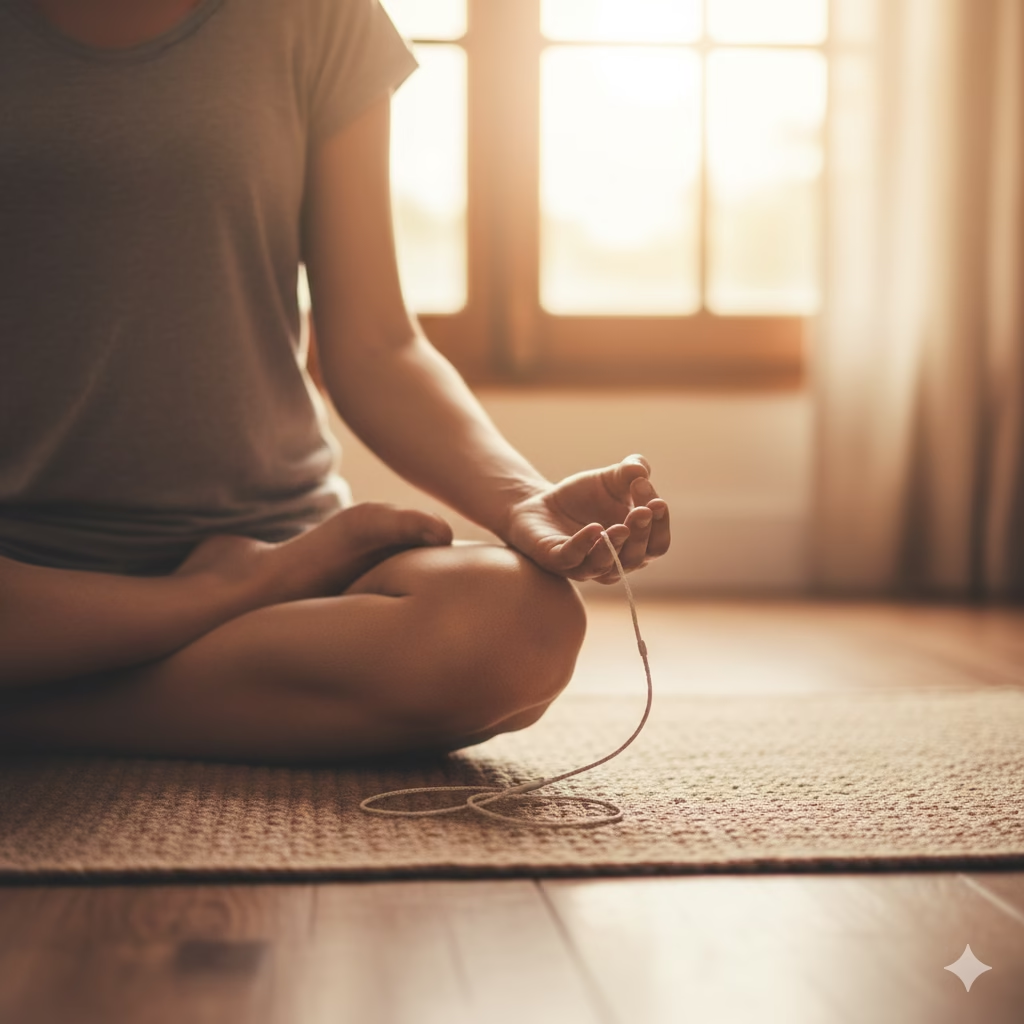
We’ve all hit that wall where stress feels like a heavy weight we can’t shake off. Sometimes, traditional relaxation just doesn’t seem to reach the deep tension we carry. This guide explores the simple, yet profound, idea that the right sound can physically move stuck energy and tension in the body. If you’re looking for a new way to find deep calm, it’s time to explore how you can truly vibrate your way to wellness.
Vibrate: The Ancient Power of Sound Medicine
For centuries, sound has been more than just something we hear—it has been used as powerful medicine. Cultures worldwide, from Tibetan monks to ancient tribes, have used specific sounds for healing. Today, science supports this idea. It shows us that our bodies are not just physical; they are vibrational. We are, quite simply, sound chambers.
When we feel stress, anxiety, or deep tension, our body’s natural frequencies get unbalanced. Think about it: a specific sound or pitch can shatter a glass. Now, think about what precise, calming frequencies can do for your tight muscles and racing thoughts!
This is the core idea of vibrational healing. It suggests that we can help the body return to its natural, balanced state by using precise, gentle sounds. We’ll explore sound methods that go beyond the usual singing bowls. We’ll teach you exactly how to vibrate your way to deeper calm, better focus, and lasting wellness.

Concept: An abstract shot showing gentle sound waves (subtle ripples or lines) moving across an outline of a human body, symbolizing the physical effect of vibration.
The Simple Science: How Sound Heals
The key to vibrational healing is resonance. Every cell, bone, and organ in your body has its own natural, healthy frequency.
Imagine two guitars side-by-side. If you pluck the A-string on one, the A-string on the other guitar will start to gently move or vibrate. It’s resonating with the first string, even though you didn’t touch it.
Sound healing works the same way:
- Imbalance: A tight neck or a busy mind is vibrating at a stressed, “stuck” frequency.
- Entrainment: You introduce a strong, pure, healthy frequency (from a fork or bowl).
- Healing: The stressed part of your body starts to match, or “entrain,” with the healthy frequency. The tension lets go, and balance returns.
When we use calming, low-frequency sounds, we instantly tell the nervous system to drop its high-frequency stress response.
Modality Spotlight: Tools to Vibrate Your Body
Singing bowls are wonderful, but the sound world is vast. These three methods offer unique ways to harness vibration for wellness.
1. Tuning Forks: Precision Healing
Tuning forks are like specialized tools in sound therapy. They don’t fill the room with sound like a bowl; they deliver a clean, sustained tone and precise vibration right where you need it.
How They Work:
Tuning forks are set to specific frequencies (measured in Hertz, or Hz). These frequencies are linked to different physical or emotional states. For instance, the common 128 Hz fork is often used to help bone and tissue repair.
How to Do It:
- Activate: Gently tap the fork on a rubber pad or your knee. It will start to hum.
- Listen: Hold the vibrating prongs next to your ear. Let the pure tone calm your thoughts.
- Vibrate: Place the stem of the vibrating fork directly onto a tight spot, like a stiff joint or muscle knot. The vibration travels deep into the tissue. This helps physically unstick the tension.
Concept: A close-up of a hand activating a metal tuning fork against a surface, showing the subtle blur of vibration.

2. Therapeutic Drums: Deep, Rhythmic Grounding
Drums, especially large frame drums used in ancient healing traditions, are pure rhythm. They use deep, low frequencies and strong, consistent beats to shake you out of stress.
How They Work:
The steady, rhythmic sound (around 4 to 7 beats per second) is tied to Theta brainwaves. This is the state linked to deep meditation, trance, and dreaming. The powerful, consistent rhythm bypasses the thinking mind. It forces your body into a state of deep, primitive rest and release.
How to Do It:
- Find the Rhythm: Look for tracks called “Shamanic Drumming” or “Rhythmic Sound Journey.”
- Lie Down: Get comfortable on the floor with headphones or good speakers.
- Surrender: Focus on letting the deep beat enter your body. The consistent, low-frequency sound acts like a physical massage for your nervous system. It pulls you into a deep, internal focus.

Concept: A simple, natural image of a hand holding a mallet over a large, round frame drum (like a shamanic drum), with soft, deep lighting.
3. Didgeridoos and Drones: Total Immersion
The didgeridoo, an ancient Australian wind instrument, makes a continuous, circular drone sound. Because of its very low, sustained frequency, it’s one of the best tools for full-body vibrational healing.
How They Work:
The sound of a drone vibrates the air in a sustained way. This causes almost your entire body to resonate with the sound. Its low Hz tones are often used to massage internal organs and help energy flow smoothly throughout the body.
How to Do It:
- Immersive Listening: Find tracks with sustained, deep drone notes (like didgeridoo or low-frequency ambient music).
- Feel the Sound: Sit or lie down and note where you feel the sound in your body. Is it in your chest? Your sinuses? Your stomach? Breathe deeply into those areas, letting the sound gently move the air inside you.

Concept: A close-up shot of the mouth of a didgeridoo, maybe with a person subtly visible playing it in the background, emphasizing the sustained air movement.
Expanding the Spectrum: Frequencies for Specific Needs
You can pick certain frequencies to aim for different goals. This moves your practice from simple relaxation to active healing.
4. Solfeggio Frequencies: Spiritual Alignment
These are specific tones (like 528 Hz or 432 Hz) based on old music theory. Many people believe each frequency has a unique benefit, from better spiritual connection to healing transformation.
How They Work:
The theory suggests that these pure, specific frequencies help balance the body’s energy centers, or chakras. This restores spiritual and emotional harmony.
How to Do It:
- Select Your Tone: Choose a frequency based on your goal (e.g., 528 Hz is often used for “transformation” and love).
- Meditate: Play the tone quietly in the background during your meditation or yoga. Focus on the intention linked to that specific frequency.

Concept: A vibrant, colorful, abstract visualization of sound waves or a spectrum of color, perhaps with the number 528 faintly visible, symbolizing energy and alignment.
5. Rhythmic Music to Vibrate with: Yoga and Flow
For physical practice like yoga, the best sound helps your body vibrate at a constant, steady tempo.
How They Work:
Instrumental music with a stable tempo (around 60 to 80 beats per minute, or BPM) helps your heart rate slow down. It also helps your breathing match the music’s beat. This creates a state of relaxed alertness. This state is perfect for holding poses and flowing smoothly.
How to Do It:
- Check the BPM: Use playlists labeled “Yoga Flow” or “Ambient BPM.”
- Move with the Sound: As you breathe and move through your poses, let the beat guide the smoothness of your transitions. Focus on how the music helps you flow.

Concept: A silhouette of a person holding a yoga pose (like Warrior II) in a warm, dimly lit room, with sound subtly implied.
Practical Application: How to Vibrate Safely and Effectively
To get the best results from vibrational healing, remember these simple rules.
1. Volume is Vital
Your goal is resonance, not loud noise. The sound must be clear enough to be heard and felt, but never loud enough to cause stress or discomfort. High volume triggers defense tension. This is the opposite of the healing you want.
2. Lie Down Flat
Whenever you can, lie flat on your back during sound sessions (especially with bowls or rhythmic drums). This lets the sound waves and vibrations pass evenly through your body, which is mostly water, for maximum effect.
3. Breathe with the Sound
Your breath naturally amplifies sound. As you listen, try to make your exhales long, slow, and deep. Imagine the sound you are hearing being carried deep into your body by your breath.
4. Headphones vs. Speakers
- For Tonal/Vibrational Work (Forks, Solfeggio): Use high-quality headphones. This delivers the pure frequency directly to your inner ear without outside noise getting in the way.
- For Immersion (Drums, Drones): Use a high-quality speaker placed on the floor near you. This allows the low frequencies to physically vibrate your space and massage your body.

Concept: A person lying down comfortably under a soft blanket with a speaker placed on the floor nearby, emphasizing the immersive, restful setup.
The Next Step: Building Your Sonic Sanctuary
Your home can easily become a place of intentional healing. Start by adding these sounds to your daily routine:
- Before Sleep: Use deep, low Hz drone sounds to calm your nervous system before bed.
- During a Slump: Use a sharp 128 Hz tuning fork on your desk. Use it to hit a tension point and quickly reset your focus.
- For Grounding: Listen to rhythmic drum tracks whenever you feel scattered or overwhelmed.
By understanding that sound can literally vibrate away stress and tension, you open the door to a powerful, holistic form of wellness. Your body is ready to resonate; you just need to give it the right tone.

Concept: A beautifully arranged side table showing a small speaker, a set of tuning forks, and a meditation journal, symbolizing the personalized wellness toolkit.
Frequently Asked Questions (FAQ)
Q: Is sound healing safe for everyone?
A: Yes, sound healing is generally very safe and gentle. However, if you have a pacemaker, are pregnant, or have conditions like epilepsy, you should talk to your doctor first. This is especially important before intense vibrational sessions (like placing loud gongs very close to the body). Simply listening to calming sounds through speakers is almost always safe.
Q: Do I need expensive crystal bowls to get the benefit?
A: No, absolutely not. Crystal bowls are great, but you can get powerful vibrational healing from high-quality recordings of Tibetan bowls, rhythmic drumming tracks, or even inexpensive metal tuning forks. The true healing comes from the frequency and your intention, not the price of the tool.
Q: Can I use sound healing for chronic pain?
A: Many people find that specific low frequencies (like those from a 128 Hz tuning fork or deep drone) help manage chronic pain. They do this by helping reduce inflammation and promoting relaxation. Sound therapy is a great extra tool, but it must not replace prescribed medical treatment.
Q: How long should a sound session last?
A: Even 5 to 10 minutes of intentional listening can make a difference. For deep relaxation or meditation, 20 to 45 minutes is ideal. The most important thing is consistency: short daily sessions are more effective than long, infrequent ones.
References
- NIH – Effects of Singing Bowl Sound Meditation on Mood
- LondonDrumInstitute – Let It All Out
- GroundedKiwi – Benefits of Tuning Forks for Natural Healing
Recent Posts


